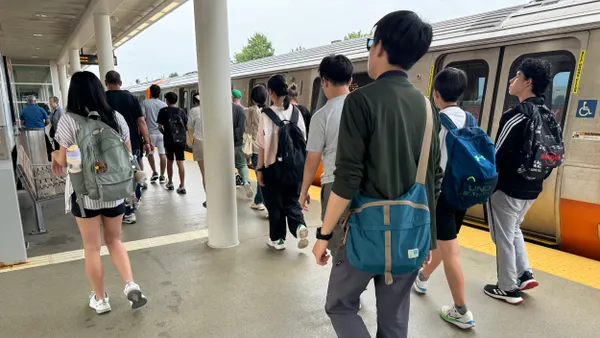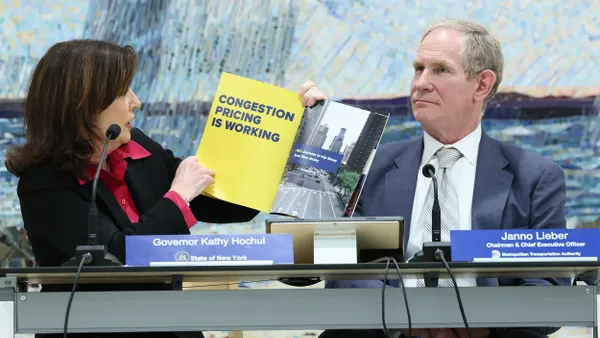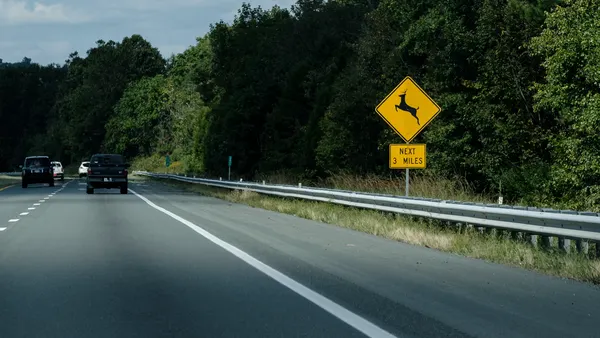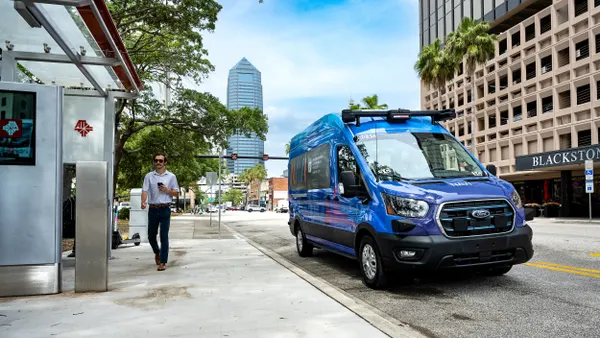Dive Brief:
- New York City subway riders now can use a Google Assistant voice feature to access real-time transit information.
- Android phone users can ask questions such as, "Hey Google, when is the next 4 train arriving?" and the assistant will provide the estimated arrival time as well as walking directions to the station.
- Beginning on May 31, Google Pay will be accepted at selected stations as part of the Metropolitan Transit Authority's (MTA) transition to a touchless fare payment system, OMNY. That system will allow passengers to pay for transit trips with smartphones, wearable devices, credit or debit cards when boarding a bus or passing through a subway turnstile. In the coming weeks Google Maps will display which routes accept Google Pay when users search for directions.
Dive Insight:
Transit agencies and private companies have been working on ways to modernize mobility and make transportation data accessible for passengers.
Philadelphia and Columbus, OH are among the cities to install digital information kiosks that display rotating messages, including transit information. Chicago launched a pilot for digital information screens inside buses that shows real-time updates on transfers, service alerts and arrival time at stops. The Google Assistant voice feature that provides real-time transit information is another innovation to make transportation information more accessible.
Offering passengers this type of real-time information increases convenience, but it also shows citizens more transit options. Greater convenience and more options have the potential to boost transit ridership.
Like New York, a number of cities are installing contactless transit fare payment systems and retiring paper or plastic card swipe or touch systems, as well as most cash payments. Lane County, OR is transitioning to touchless payments for its bus network. This week Portland, OR said it became the first U.S. city to launch a contactless system integrated with Apple Pay. Dallas and Miami-Dade County are expected to add Mastercard's contactless fare payment system this year.
Some vendors emphasize that their systems are open loop, meaning the payment solutions can be stored on a mobile device and used outside the transit system, rather than having to rely on a dedicated transit card.
Contactless systems greatly increase convenience and trip speed for passengers as they can reload accounts and pass through turnstiles faster. Quicker payments allow customers to pass through the system faster and alleviate congestion. Reducing back-ups also benefits transit agencies; the agencies also benefit because touchless systems generally are said to carry lower operating costs.










